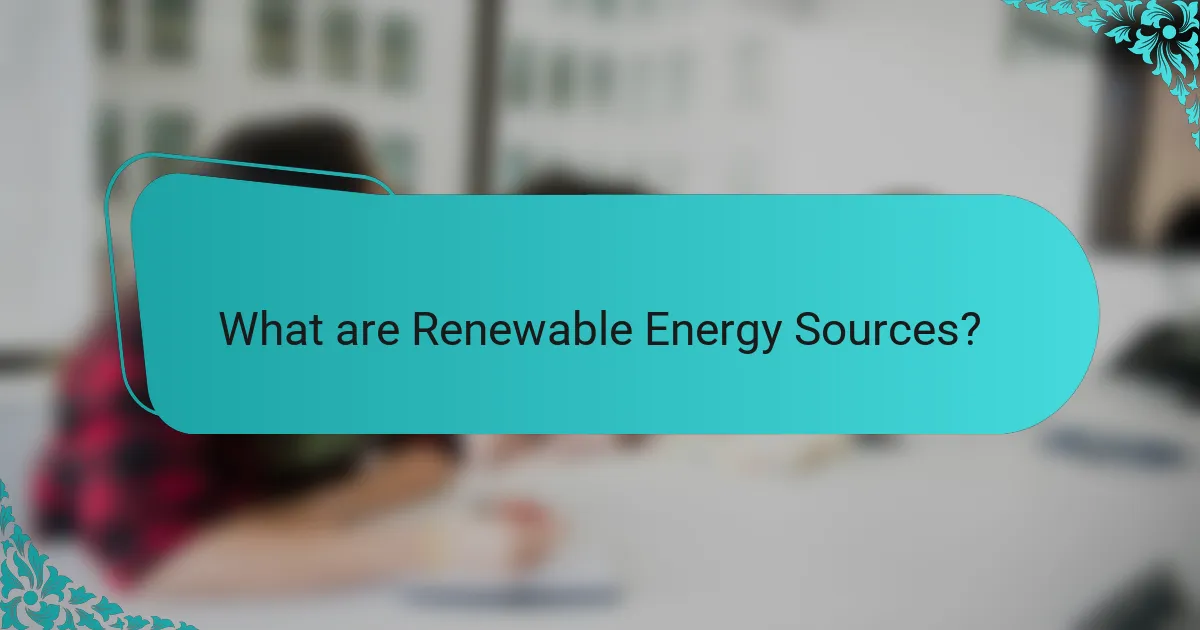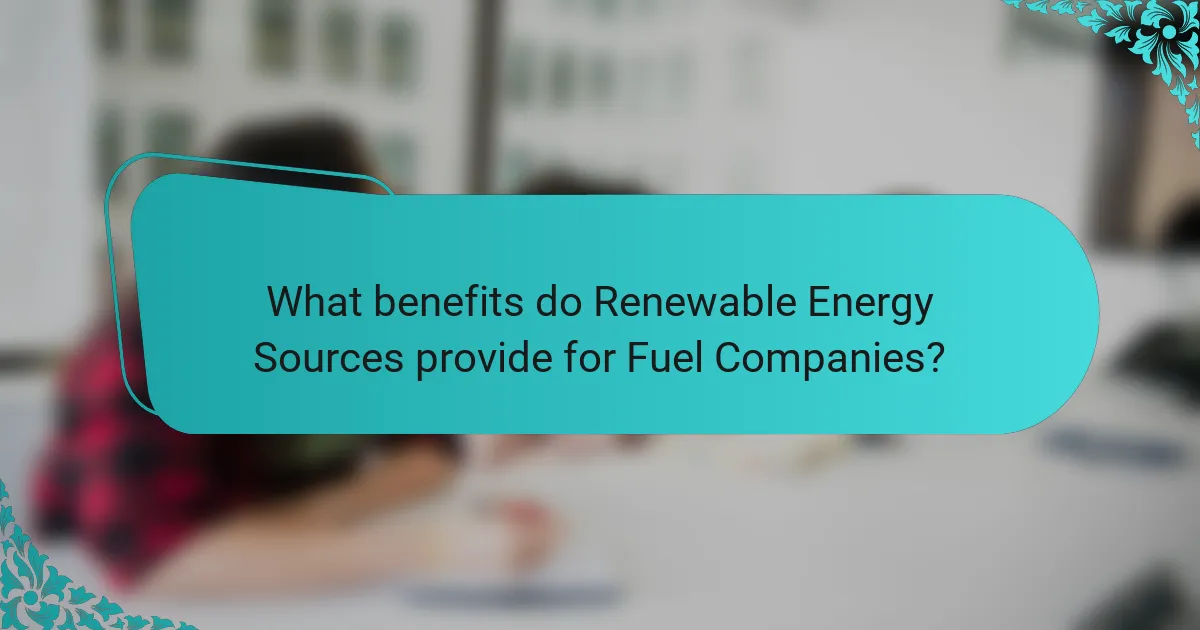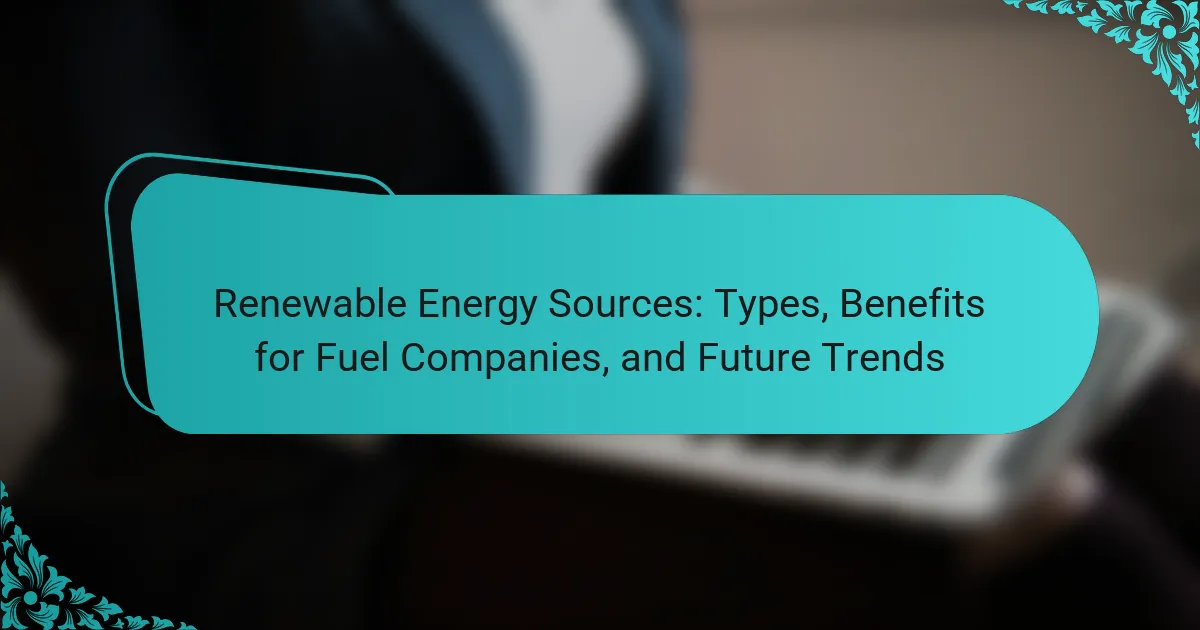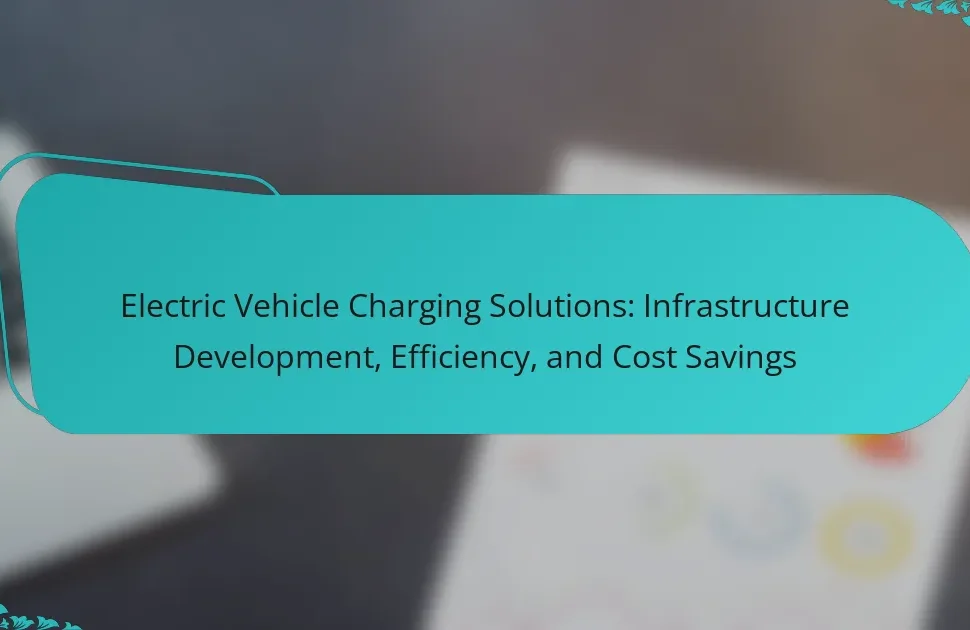
What are Renewable Energy Sources?
Renewable energy sources are energy types that are replenished naturally. Common examples include solar, wind, hydroelectric, geothermal, and biomass energy. These sources are sustainable, meaning they can be used without depleting resources. According to the International Energy Agency, renewable energy accounted for nearly 30% of global electricity generation in 2020. This statistic demonstrates the growing reliance on renewable sources. Additionally, renewable energy helps reduce greenhouse gas emissions. This shift supports climate change mitigation efforts. Overall, renewable energy sources play a crucial role in the transition to a cleaner energy future.
How do Renewable Energy Sources differ from traditional energy sources?
Renewable energy sources differ from traditional energy sources in their sustainability and environmental impact. Renewable sources, such as solar and wind, are naturally replenished and have a lower carbon footprint. Traditional energy sources, like coal and natural gas, are finite and contribute to greenhouse gas emissions. According to the U.S. Energy Information Administration, renewable energy accounted for about 20% of U.S. electricity generation in 2020. In contrast, fossil fuels dominated, providing approximately 60%. This distinction highlights the growing shift towards cleaner energy alternatives.
What are the key characteristics of Renewable Energy Sources?
Renewable energy sources are characterized by their ability to regenerate naturally. They include solar, wind, hydro, geothermal, and biomass energy. These sources are sustainable and have a low environmental impact. Renewable energy reduces greenhouse gas emissions significantly compared to fossil fuels. For instance, solar energy production emits no direct carbon dioxide. Wind energy harnesses the natural movement of air, producing clean electricity. Hydro energy utilizes flowing water to generate power without depleting resources. Geothermal energy taps into the Earth’s heat, providing a consistent energy source. Biomass energy converts organic materials into fuel, promoting waste reduction. These characteristics make renewable energy essential for a sustainable future.
Why is sustainability important in the context of Renewable Energy Sources?
Sustainability is crucial in the context of renewable energy sources because it ensures long-term environmental health. Renewable energy sources, such as solar, wind, and hydro, provide cleaner alternatives to fossil fuels. They reduce greenhouse gas emissions, which contribute to climate change. Sustainable practices in renewable energy help preserve natural resources for future generations. According to the International Renewable Energy Agency, renewable energy could provide up to 86% of global power demand by 2050. This shift promotes energy security and reduces dependence on finite resources. Therefore, sustainability in renewable energy is essential for ecological balance and economic stability.
What types of Renewable Energy Sources are available?
There are several types of renewable energy sources available. These include solar energy, which harnesses sunlight through photovoltaic cells. Wind energy captures wind movement using turbines to generate electricity. Hydropower utilizes flowing water to produce energy, commonly through dams. Biomass energy is derived from organic materials, such as plant and animal waste. Geothermal energy taps into heat from the Earth’s core for power generation. Ocean energy encompasses tidal and wave energy, converting ocean movements into electricity. Each of these sources contributes to a sustainable energy future by reducing reliance on fossil fuels and lowering greenhouse gas emissions.
What are the main types of solar energy technologies?
The main types of solar energy technologies are photovoltaic (PV) systems, solar thermal systems, and concentrated solar power (CSP). Photovoltaic systems convert sunlight directly into electricity using solar cells. Solar thermal systems use sunlight to heat a fluid, which can then produce steam to drive a turbine for electricity generation. Concentrated solar power systems utilize mirrors or lenses to focus sunlight onto a small area, generating high temperatures for electricity production. According to the International Energy Agency, solar energy capacity has grown significantly, reaching over 800 GW globally in 2020. This growth demonstrates the increasing adoption of these technologies in renewable energy strategies.
How does wind energy generation work?
Wind energy generation works by converting the kinetic energy of wind into electrical energy. Wind turbines capture wind flow with their blades. The blades rotate around a rotor connected to a generator. As the rotor turns, it drives the generator to produce electricity. This process is efficient and environmentally friendly. In 2021, wind energy accounted for about 8.4% of global electricity generation, according to the International Energy Agency. Wind farms can be located onshore or offshore, maximizing energy capture. The technology continues to advance, improving efficiency and reducing costs.
What role does hydropower play in Renewable Energy?
Hydropower is a significant component of renewable energy. It generates electricity by harnessing the energy of flowing water. This method accounts for approximately 16% of the world’s electricity production. Hydropower is the largest source of renewable electricity globally. It provides a reliable and stable energy supply. Unlike fossil fuels, hydropower produces no direct greenhouse gas emissions. This contributes to reducing climate change impacts. Additionally, hydropower facilities can support energy storage through pumped-storage systems. These systems enhance grid stability by balancing supply and demand.
What are the emerging types of Renewable Energy Sources?
Emerging types of renewable energy sources include tidal energy, wave energy, and enhanced geothermal systems. Tidal energy harnesses the gravitational pull of the moon and sun on ocean tides. Wave energy captures energy from surface waves on oceans and seas. Enhanced geothermal systems utilize heat from the Earth’s interior by injecting water into hot rock formations. These technologies are gaining attention for their potential to provide sustainable energy. According to the International Renewable Energy Agency, the global capacity for tidal energy could reach 120 GW by 2050. Wave energy has the potential to supply up to 10% of the world’s electricity needs. Enhanced geothermal systems can provide a constant energy source, unlike intermittent sources like solar and wind.

What benefits do Renewable Energy Sources provide for Fuel Companies?
Renewable energy sources provide several benefits for fuel companies. They can diversify energy portfolios, reducing dependence on fossil fuels. This diversification leads to increased energy security and stability. Renewable sources often have lower operational costs over time. For instance, solar and wind energy have minimal fuel costs once established. Additionally, utilizing renewables can enhance a company’s public image. Companies that invest in green energy often attract environmentally conscious consumers. Furthermore, renewable energy can lead to compliance with regulatory requirements, avoiding penalties. According to the International Renewable Energy Agency, transitioning to renewables can result in significant long-term savings. These factors collectively contribute to the overall sustainability and profitability of fuel companies.
How can Fuel Companies leverage Renewable Energy Sources?
Fuel companies can leverage renewable energy sources by integrating them into their operations. They can invest in solar and wind energy projects to power their facilities. This reduces reliance on fossil fuels and lowers operational costs. Additionally, fuel companies can develop biofuels from renewable sources. This diversification can enhance their product offerings. Research shows that companies utilizing renewable energy can improve their sustainability ratings. According to a 2021 report by the International Energy Agency, renewable energy investments are projected to rise significantly, indicating a growing market. Implementing these strategies can position fuel companies competitively in an evolving energy landscape.
What are the cost-saving benefits of adopting Renewable Energy?
The cost-saving benefits of adopting renewable energy include reduced energy bills and lower operational costs. Renewable energy sources like solar and wind have minimal fuel costs. This leads to long-term savings as they rely on free natural resources. According to the International Renewable Energy Agency, solar power costs have fallen by 89% since 2009. Additionally, renewable energy systems often have lower maintenance costs compared to fossil fuel systems. This is due to fewer moving parts and less wear and tear. Many businesses also benefit from tax incentives and rebates for renewable energy installations. These financial incentives further enhance cost savings. Overall, adopting renewable energy can significantly reduce both immediate and long-term energy expenses.
How do Renewable Energy Sources enhance corporate sustainability?
Renewable energy sources enhance corporate sustainability by reducing greenhouse gas emissions. They provide cleaner alternatives to fossil fuels. This transition leads to a decrease in carbon footprints. Companies using renewable energy can improve their environmental impact. According to the International Renewable Energy Agency, renewable energy can reduce emissions by up to 70%. This shift not only helps the planet but also boosts corporate reputation. Sustainable practices attract environmentally conscious consumers. Additionally, renewable energy sources often lead to cost savings in the long term.
What are the market advantages for Fuel Companies using Renewable Energy?
Fuel companies using renewable energy gain several market advantages. Firstly, they enhance their brand image by aligning with sustainability goals. This attracts environmentally conscious consumers and investors. Secondly, renewable energy can reduce operational costs in the long term. For example, solar and wind energy have low marginal costs after initial investment. Thirdly, companies can benefit from government incentives and subsidies for renewable energy projects. These financial supports can improve profitability. Additionally, using renewable energy helps fuel companies comply with increasingly stringent regulations on emissions. This compliance reduces the risk of penalties and legal issues. Lastly, integrating renewable energy can provide a competitive edge in a rapidly evolving energy market. According to a report by the International Energy Agency, renewable energy adoption is expected to grow significantly, indicating a shift in market demand.
How can Renewable Energy Sources improve brand reputation?
Renewable energy sources can significantly improve brand reputation by enhancing corporate social responsibility. Companies utilizing renewable energy demonstrate commitment to sustainability. This commitment attracts environmentally conscious consumers. Research indicates that 87% of consumers prefer brands that support sustainability initiatives. Additionally, using renewable energy can lead to cost savings in the long term. Lower operational costs can enhance profitability, which positively reflects on the brand. Companies like Tesla have successfully built strong reputations through their focus on renewable energy. Their brand loyalty is a direct result of their sustainable practices. Thus, adopting renewable energy sources can create a favorable public image and drive consumer preference.
What competitive advantages do Fuel Companies gain from Renewable Energy?
Fuel companies gain several competitive advantages from renewable energy. These include enhanced sustainability, which meets growing consumer demand for eco-friendly practices. Cost reductions are achieved as renewable technologies, such as solar and wind, become cheaper to implement. Regulatory compliance improves, as many governments incentivize renewable energy adoption. This leads to increased market share, as companies aligning with green initiatives attract environmentally conscious consumers. Additionally, energy diversification reduces dependency on fossil fuels, mitigating risks associated with price volatility. The shift to renewables also fosters innovation, positioning companies as industry leaders in emerging technologies. These advantages collectively strengthen brand reputation and customer loyalty in a competitive landscape.

What are the future trends in Renewable Energy Sources?
Future trends in renewable energy sources include increased adoption of solar and wind technologies. These technologies are becoming more cost-effective due to advancements in materials and efficiency. Energy storage solutions, such as batteries, are improving, enabling better integration of renewables into the grid. Smart grid technology is also evolving, allowing for more efficient energy distribution and consumption. Governments worldwide are implementing stricter regulations on carbon emissions, driving investments in clean energy. Additionally, there is a growing focus on hydrogen as a clean fuel alternative. The global renewable energy market is projected to reach $2 trillion by 2025, highlighting its rapid growth.
How is technology evolving in the Renewable Energy sector?
Technology is evolving rapidly in the Renewable Energy sector. Innovations are enhancing efficiency and reducing costs. Solar panel technology now includes bifacial panels that capture sunlight from both sides. Wind turbines are becoming larger and more efficient, increasing energy output. Energy storage solutions, such as advanced lithium-ion batteries, are improving grid reliability. Smart grid technology is optimizing energy distribution and consumption. Artificial intelligence is being utilized for predictive maintenance and energy management. According to the International Renewable Energy Agency, global renewable energy capacity reached 2,799 GW in 2020, showcasing significant growth.
What innovations are shaping the future of solar energy?
Innovations shaping the future of solar energy include advanced photovoltaic materials, energy storage systems, and smart grid technology. Perovskite solar cells are a notable advancement, offering higher efficiency and lower production costs. Energy storage solutions, like lithium-ion batteries, enhance solar energy reliability by storing excess energy for later use. Smart grid technology integrates solar power with the existing grid, optimizing energy distribution and consumption. Additionally, solar tracking systems increase energy capture by adjusting panel angles throughout the day. These innovations collectively improve the efficiency, affordability, and accessibility of solar energy.
How are advancements in battery storage impacting Renewable Energy?
Advancements in battery storage significantly enhance the viability of renewable energy. Improved battery technology allows for better energy storage solutions. This enables renewable sources, like solar and wind, to provide consistent power. For instance, lithium-ion batteries now offer higher energy densities. They can store more energy for longer periods. This reduces reliance on fossil fuels during low production times. Additionally, advancements lead to lower costs for battery systems. According to the International Energy Agency, battery prices have dropped by 89% since 2010. This affordability makes renewable energy more accessible. Enhanced battery storage thus supports a more stable and reliable energy grid.
What policy changes are influencing the growth of Renewable Energy?
Government incentives are significantly influencing the growth of renewable energy. Policies such as tax credits and subsidies promote investment in solar, wind, and other renewable technologies. The U.S. federal government offers the Investment Tax Credit (ITC) for solar energy, which covers 26% of installation costs. Additionally, many states have Renewable Portfolio Standards (RPS) mandating a certain percentage of energy to come from renewable sources. These regulations encourage utility companies to diversify energy sources and invest in cleaner technologies. Furthermore, international agreements like the Paris Agreement push countries to adopt more aggressive renewable energy targets. These policy changes collectively create a favorable environment for the expansion of renewable energy initiatives.
How do government incentives affect the adoption of Renewable Energy?
Government incentives significantly boost the adoption of renewable energy. These incentives include tax credits, grants, and subsidies. They lower the financial barriers for individuals and businesses. For example, the U.S. federal solar tax credit allows consumers to deduct a percentage of installation costs from their federal taxes. A report from the International Renewable Energy Agency states that financial incentives can increase renewable energy capacity by up to 30%. Furthermore, incentives encourage innovation and investment in renewable technologies. They create jobs in the renewable sector, further supporting economic growth. Overall, government incentives are crucial for accelerating the transition to renewable energy sources.
What global agreements are promoting Renewable Energy transitions?
Global agreements promoting renewable energy transitions include the Paris Agreement and the United Nations Sustainable Development Goals. The Paris Agreement aims to limit global warming to well below 2 degrees Celsius. It encourages countries to enhance their commitments to reduce greenhouse gas emissions. The United Nations Sustainable Development Goals include Goal 7, which focuses on ensuring access to affordable, reliable, sustainable, and modern energy for all. These agreements provide frameworks for countries to collaborate and invest in renewable energy technologies. They also set targets for increasing the share of renewable energy in global energy consumption.
What practical steps can companies take to adopt Renewable Energy Sources?
Companies can adopt renewable energy sources by conducting an energy audit. This identifies current energy consumption and potential areas for improvement. Next, companies should evaluate available renewable energy options. Common choices include solar, wind, and biomass. After selecting the appropriate sources, companies can invest in renewable energy technologies. This may involve purchasing solar panels or wind turbines.
Additionally, companies should consider entering power purchase agreements (PPAs). These agreements allow companies to buy renewable energy directly from producers. Implementing energy efficiency measures is also crucial. This reduces overall energy demand and complements renewable energy efforts. Lastly, companies should engage stakeholders and communicate their renewable energy goals. This builds support and encourages collaboration.
According to the International Energy Agency, renewable energy sources have seen a significant increase in global capacity, highlighting their viability for businesses.
Renewable energy sources are energy types that are naturally replenished, including solar, wind, hydroelectric, geothermal, and biomass. This article explores the various types of renewable energy, their benefits for fuel companies, and future trends in the sector. Key points include the sustainability and environmental advantages of renewable sources over traditional fossil fuels, the role of government incentives in promoting adoption, and emerging technologies that enhance efficiency and reduce costs. The discussion also highlights how renewable energy can improve corporate sustainability and brand reputation while providing competitive advantages in the evolving energy market.




